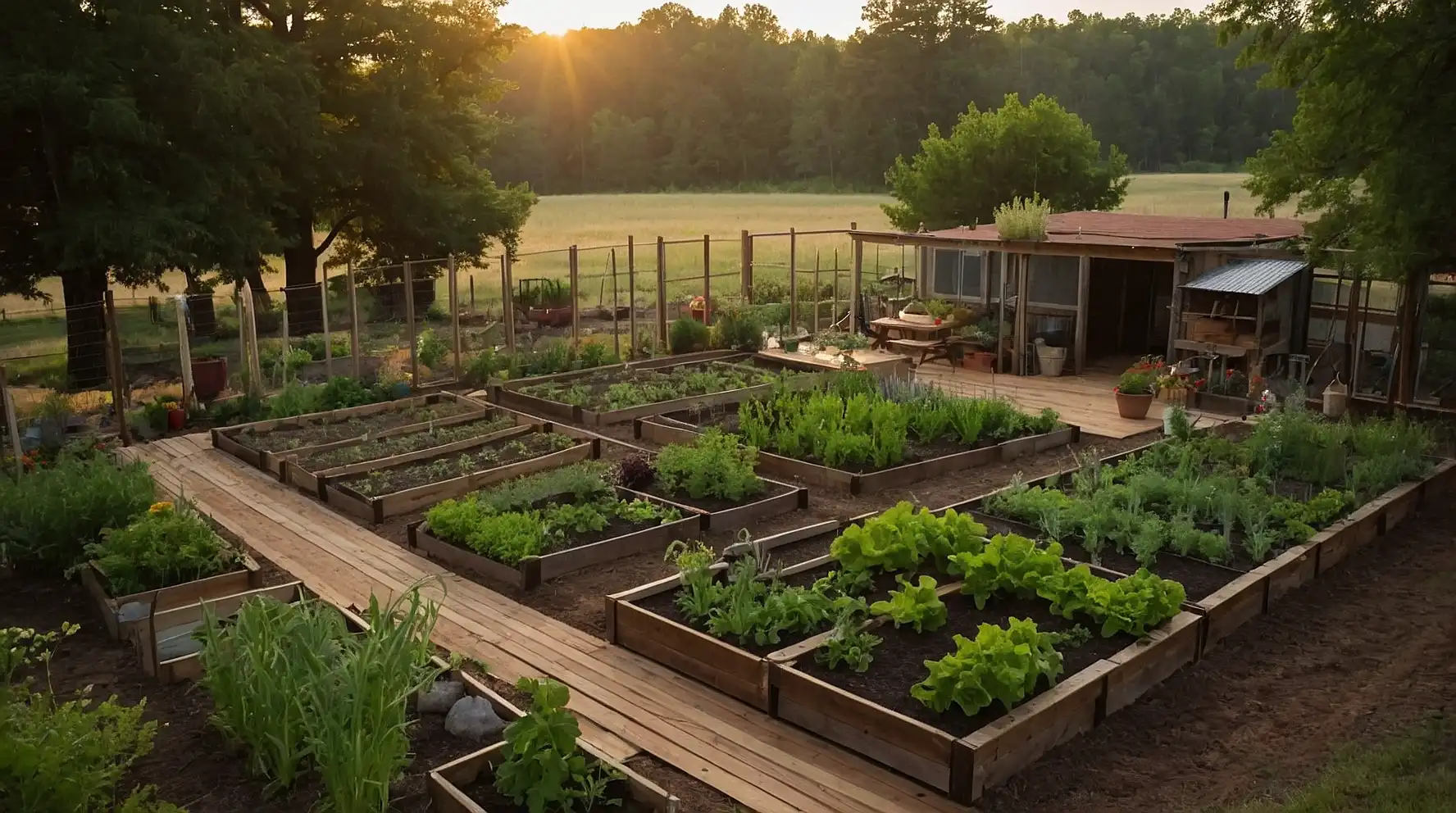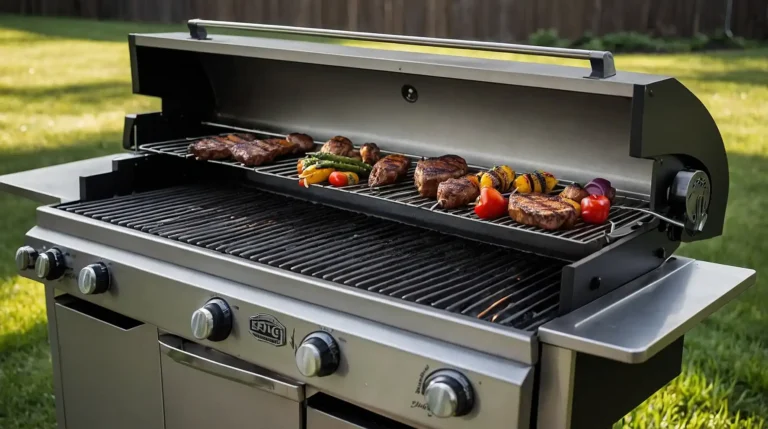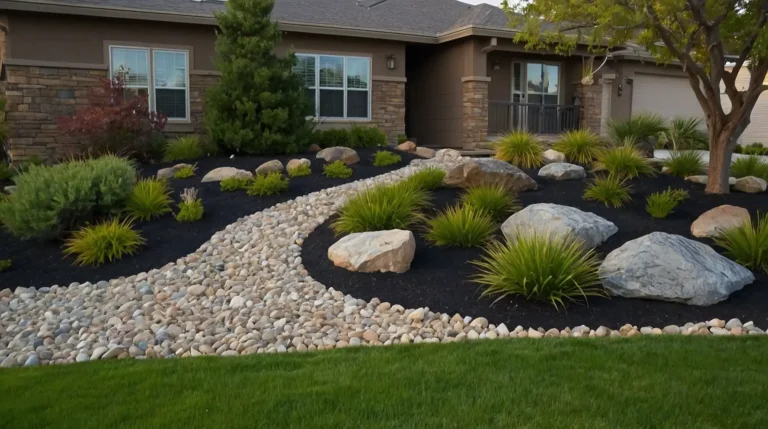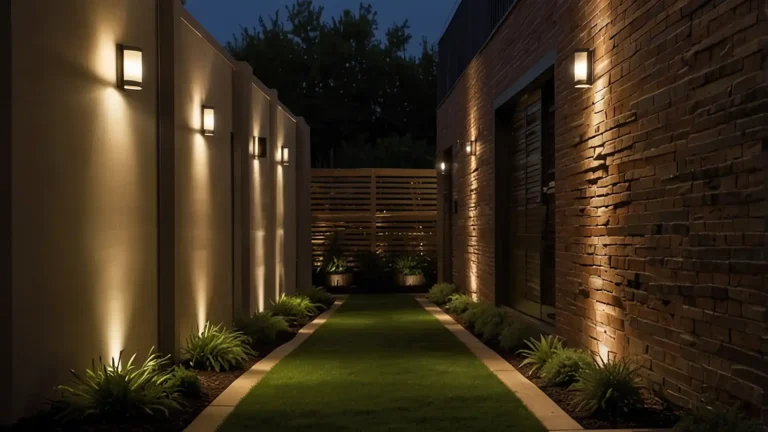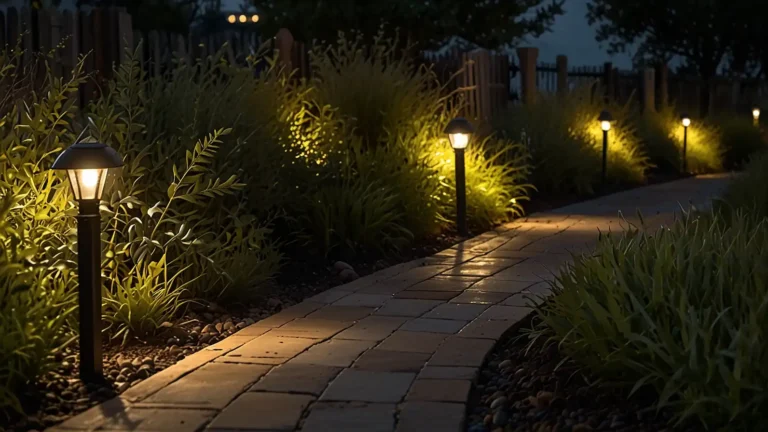27 Homesteading Garden Layout Ideas
Design a productive homesteading garden that maximizes self-sufficiency and food security for your family.
Smart layout planning ensures efficient use of space while meeting your nutritional needs.
The right garden design combines vegetables, herbs, and fruits strategically for year-round harvests. You’ll create sustainable growing systems that reduce grocery dependence.
These proven layout strategies will help you build a thriving homestead garden regardless of your available acreage or experience level.
1: Four-Season Square Foot Layout
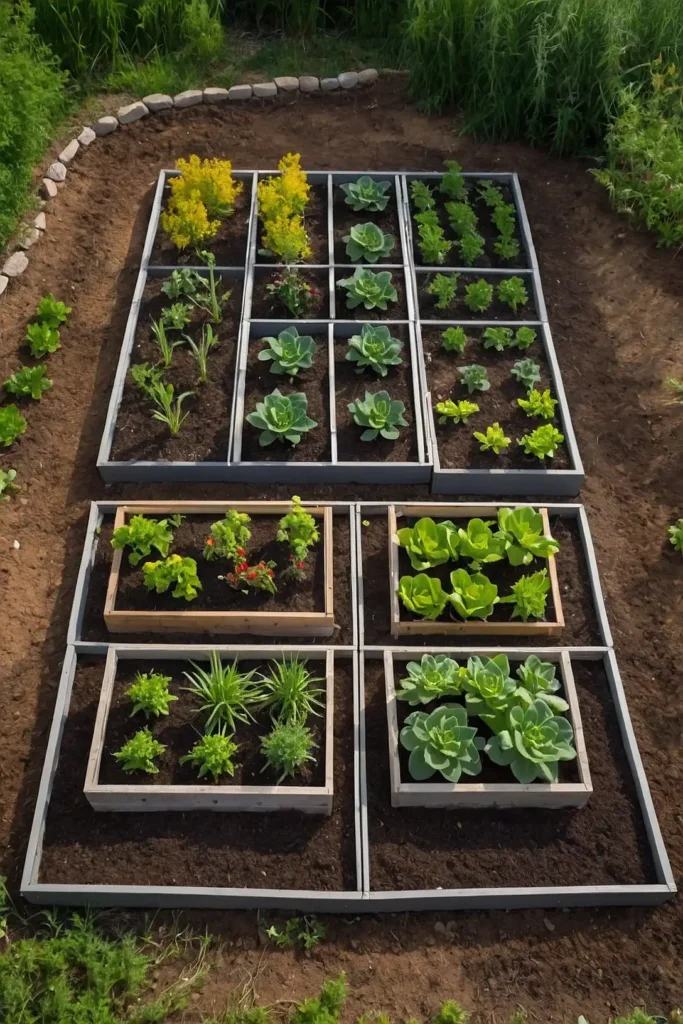
Divide your garden into 4×4 foot squares with different crops planned for each season to maximize continuous harvests throughout the year.
This intensive approach provides fresh food constantly while making efficient use of limited space. You’ll enjoy vegetables from spring through winter.
Plan succession plantings every two weeks to maintain steady harvests and prevent gaps.
2: Permaculture Food Forest Design
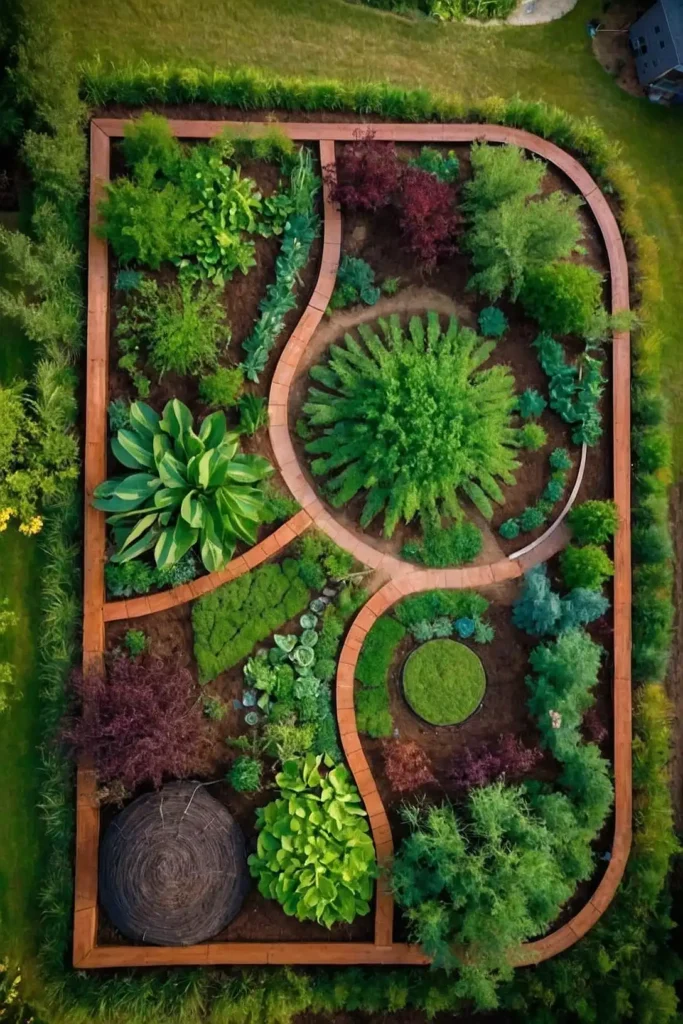
Create multi-level growing systems with fruit trees, berry bushes, herbs, and ground covers that mimic natural forest ecosystems.
The sustainable approach requires minimal inputs while providing diverse harvests for decades. You’ll build soil health while reducing maintenance needs.
Start with hardy native plants and gradually add productive species over time.
3: Three Sisters Companion Planting
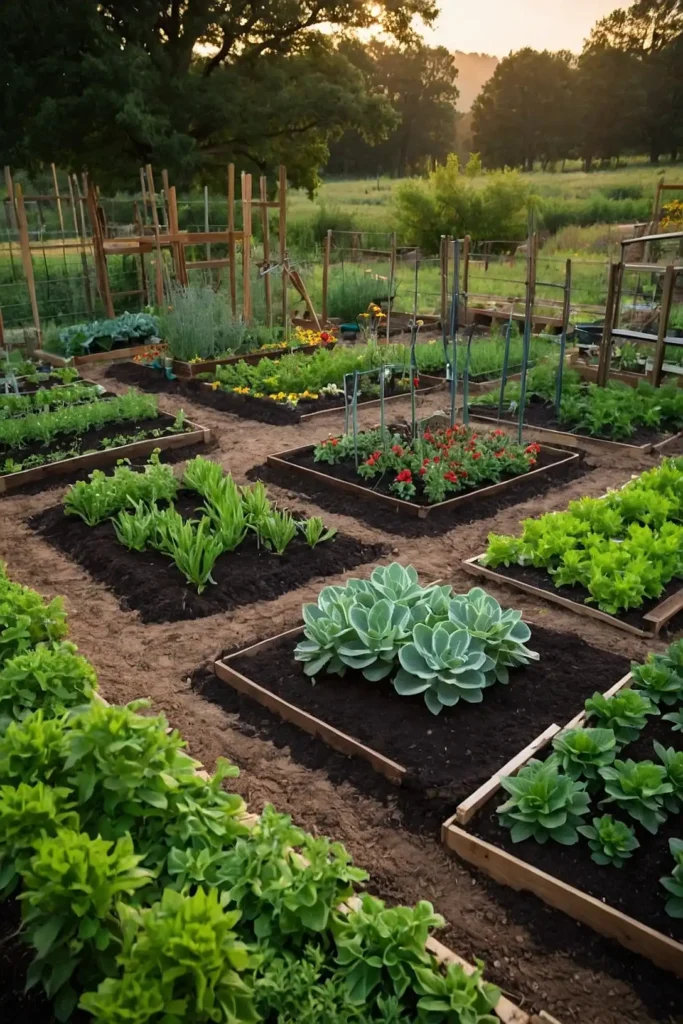
Plant corn, beans, and squash together in traditional Native American growing patterns that support each other naturally.
The symbiotic relationship provides nitrogen fixation, structural support, and ground coverage efficiently. You’ll maximize nutrition while honoring ancestral wisdom.
Add sunflowers and herbs around borders for additional beneficial companion effects.
4: Raised Bed Grid System
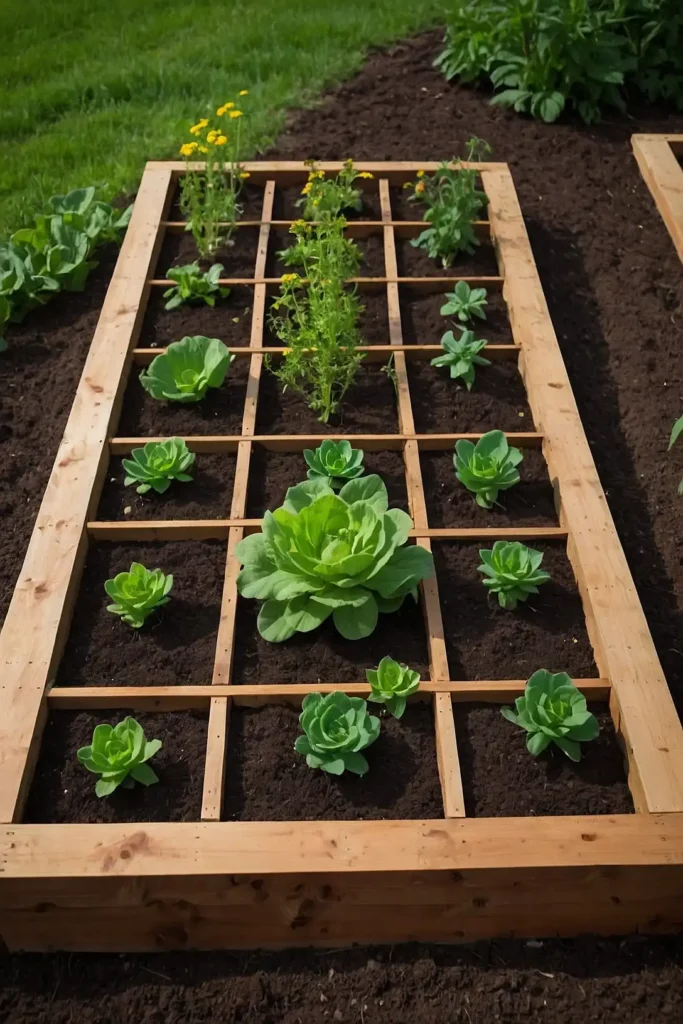
Build uniform raised beds with walking paths between them for organized, efficient garden management and soil improvement.
The structured approach provides excellent drainage while preventing soil compaction from foot traffic. You’ll extend growing seasons and improve yields significantly.
Make beds four feet wide for easy reach from both sides.
5: Zonal Growing Layout
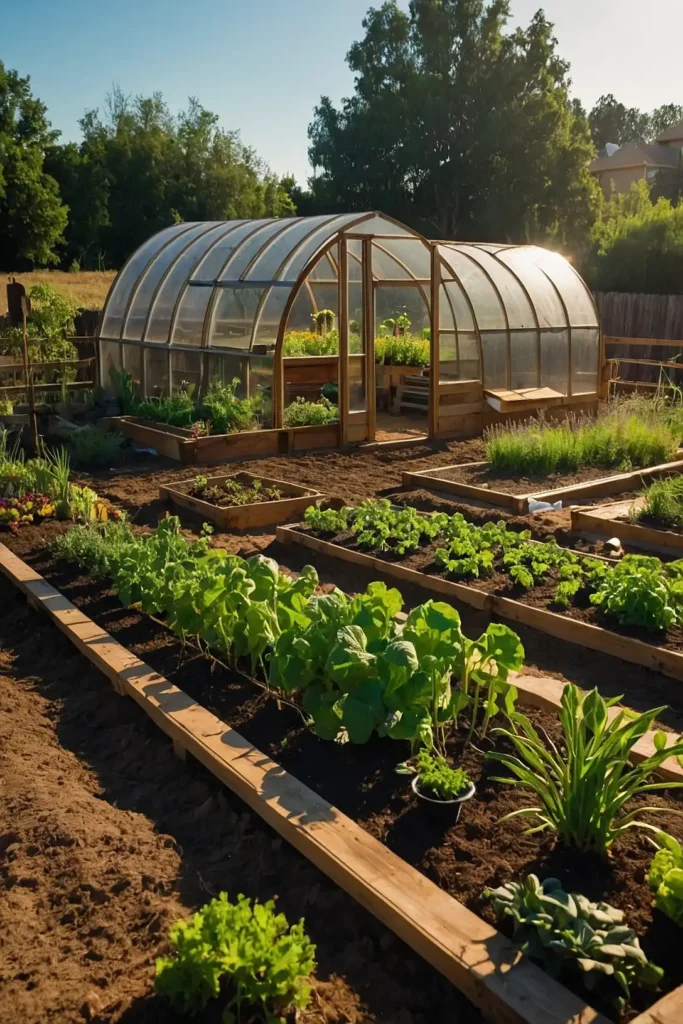
Organize crops by harvest frequency with daily-harvest items near the house and seasonal crops farther away.
The practical approach reduces daily maintenance time while ensuring convenient access to frequently used herbs and vegetables. You’ll streamline garden workflows.
Place storage and processing areas between zones for efficient garden-to-table systems.
6: Mandala Circle Garden
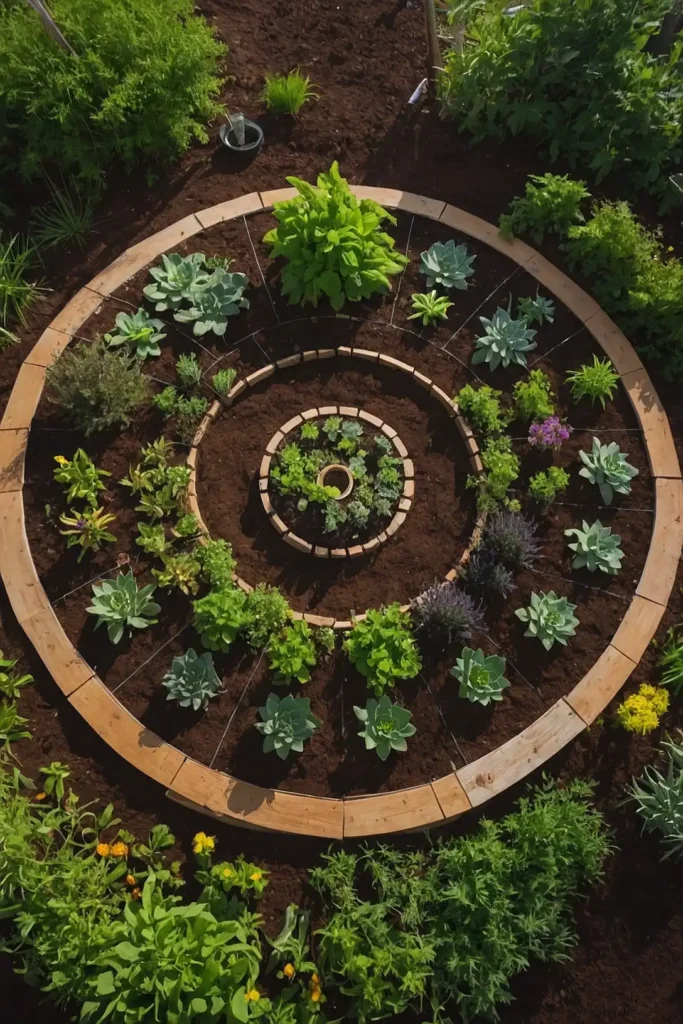
Design circular growing beds with paths radiating from center composting areas for beautiful, functional garden spaces.
The artistic approach provides easy access to all plants while creating stunning visual appeal. You’ll enjoy working in gardens that feel like outdoor rooms.
Include medicinal and culinary herbs in outer rings for convenient daily harvesting.
7: Keyhole Garden Integration
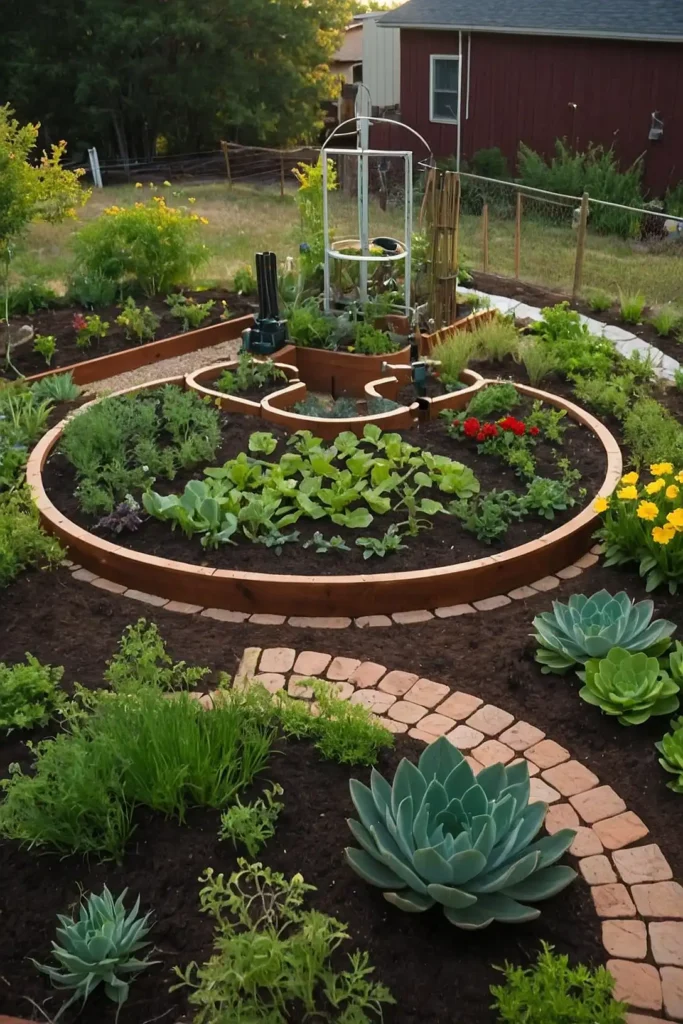
Build keyhole-shaped raised beds with central composting systems that feed nutrients directly to surrounding plants continuously.
The space-efficient design maximizes growing area while providing ongoing soil fertility through integrated composting. You’ll reduce waste while improving harvests.
Add drip irrigation systems connected to greywater for sustainable water management.
8: Vertical Growing Towers
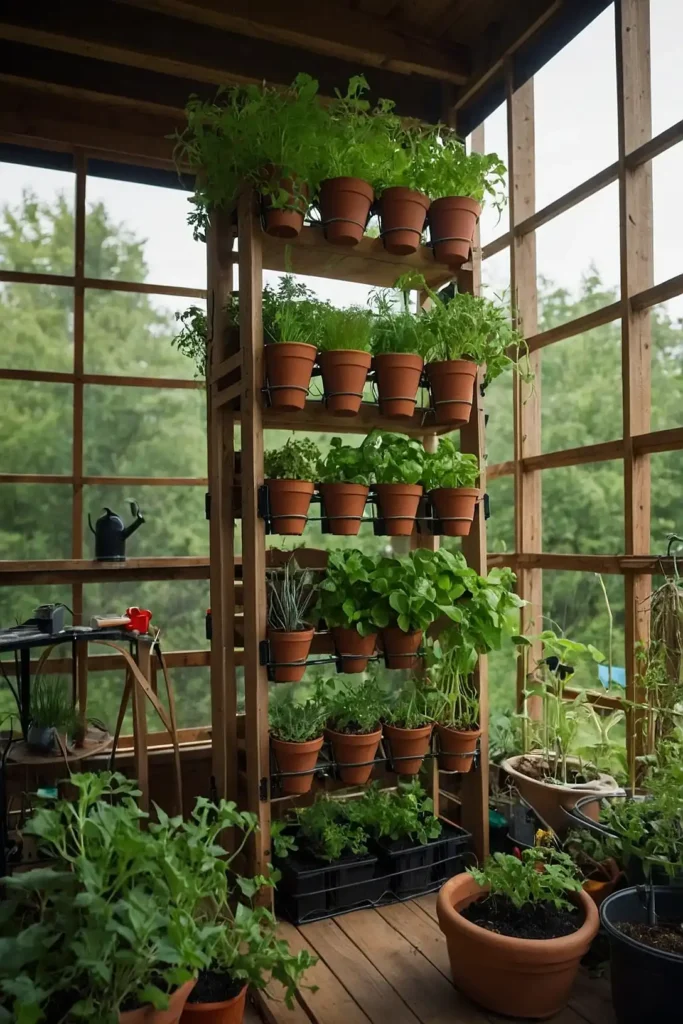
Install trellises, cages, and tower systems to grow climbing crops vertically and maximize production in small spaces.
The upward approach increases yields dramatically while providing better air circulation and easier harvesting. You’ll grow more food in less ground space.
Choose sturdy materials that withstand weather and heavy crop loads throughout seasons.
9: Greenhouse Season Extension
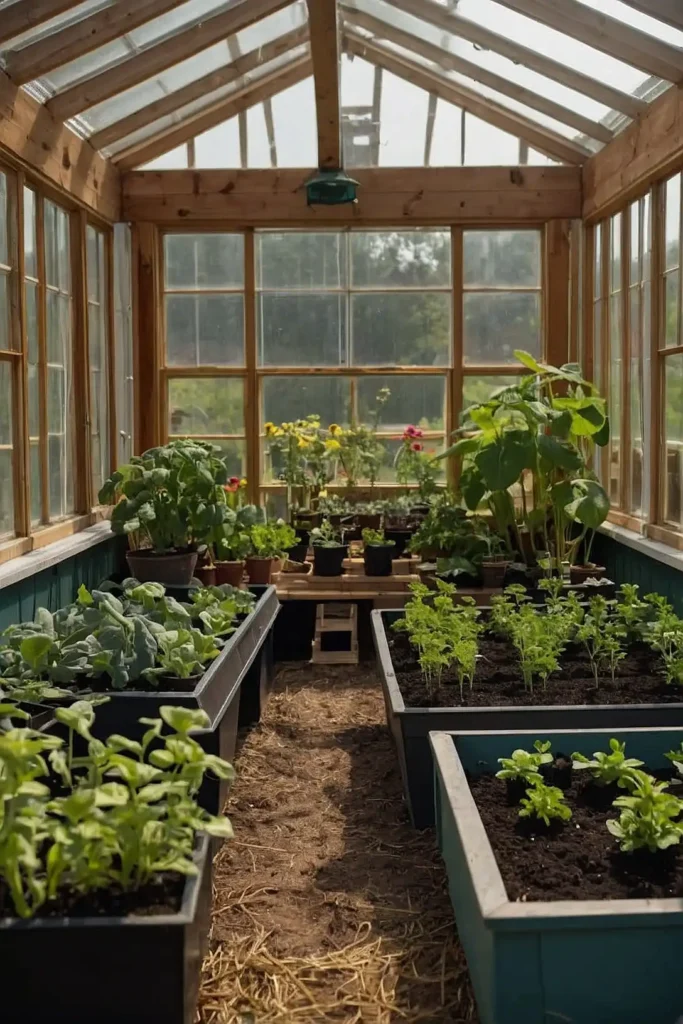
Position greenhouse structures to extend growing seasons while providing controlled environments for starting seeds and tender crops.
The protected approach enables year-round fresh food production regardless of climate challenges. You’ll reduce dependence on imported produce significantly.
Orient greenhouses for maximum solar gain and include thermal mass for temperature stability.
10: Herb Spiral Design
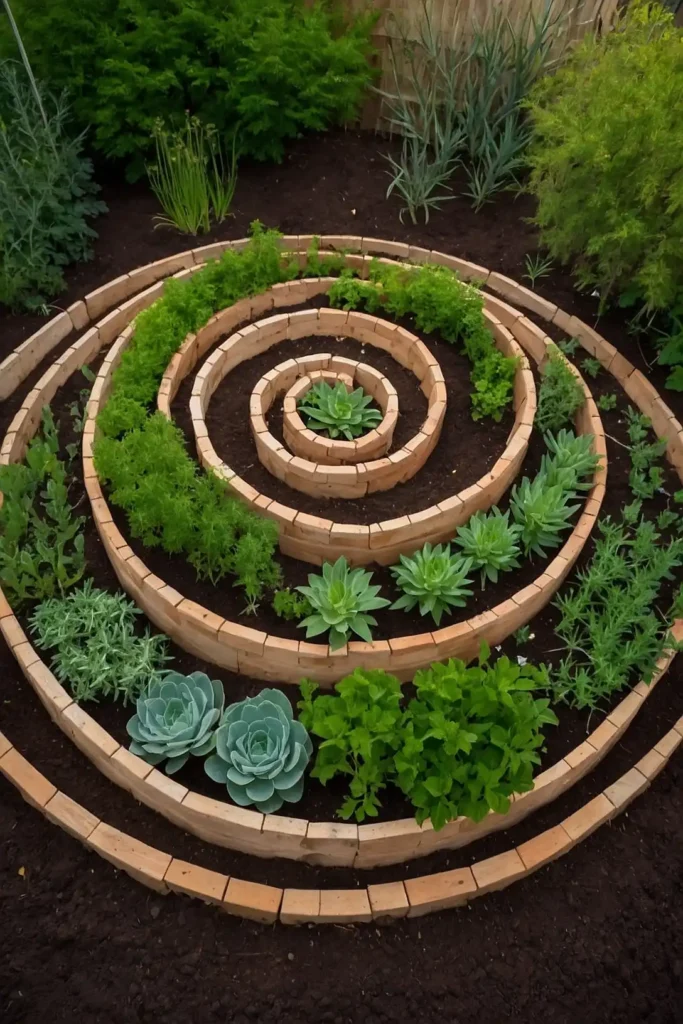
Create spiral-shaped herb gardens with different microclimates for diverse culinary and medicinal plant cultivation.
The three-dimensional approach provides various growing conditions within compact spaces while adding beautiful focal points. You’ll grow herbs for cooking and health.
Position Mediterranean herbs at the top and moisture-loving varieties at the bottom.
11: Annual-Perennial Integration
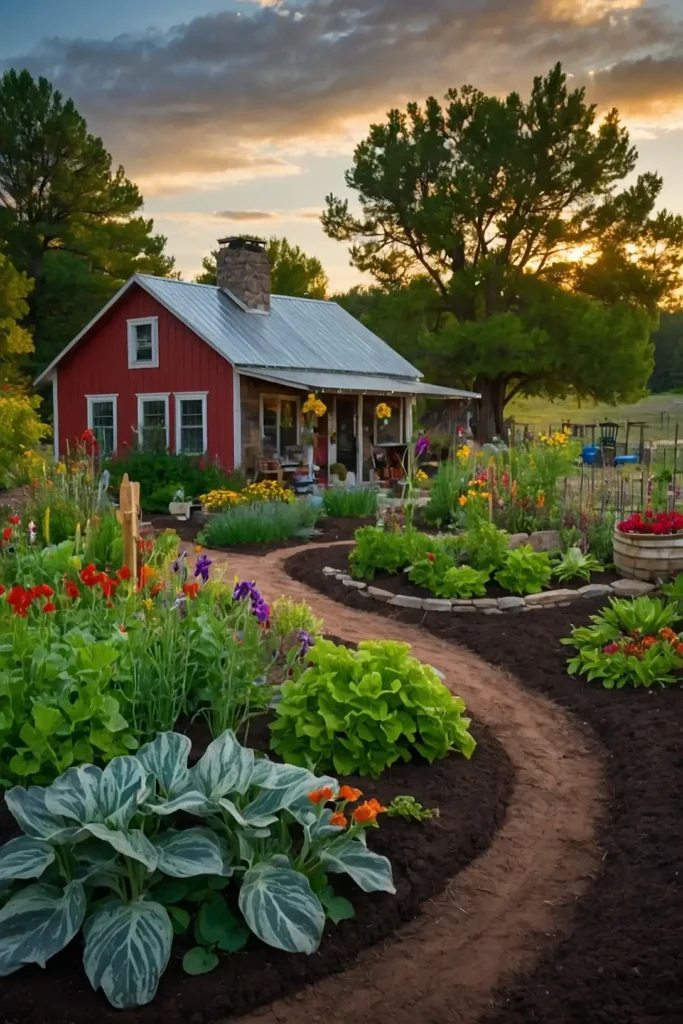
Combine annual vegetables with perennial fruits, nuts, and herbs for sustainable food systems that improve over time.
The mixed approach provides immediate harvests while establishing long-term food security through permanent plantings. You’ll build lasting food independence.
Plan perennial placement carefully to avoid shading future annual growing areas.
12: Water-Wise Layout Design
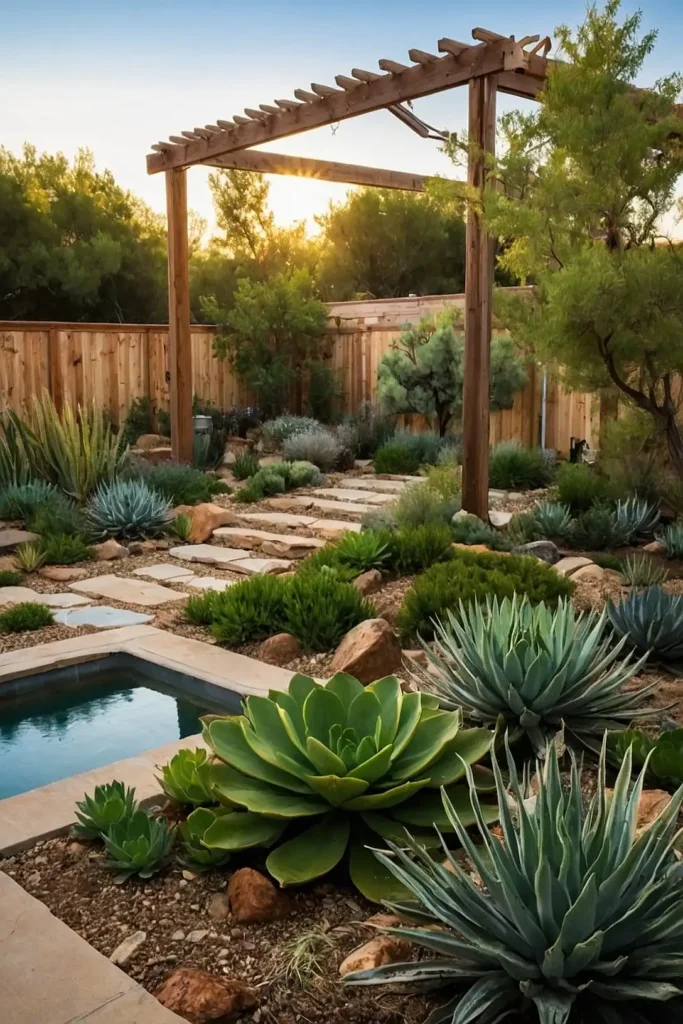
Position water-loving crops near irrigation sources and drought-tolerant plants in areas with minimal water access.
The efficient approach reduces water waste while ensuring optimal growing conditions for different plant requirements.
You’ll conserve resources while maximizing productivity. Include swales and berms to capture and direct rainwater effectively throughout gardens.
13: Pollinator Support Integration
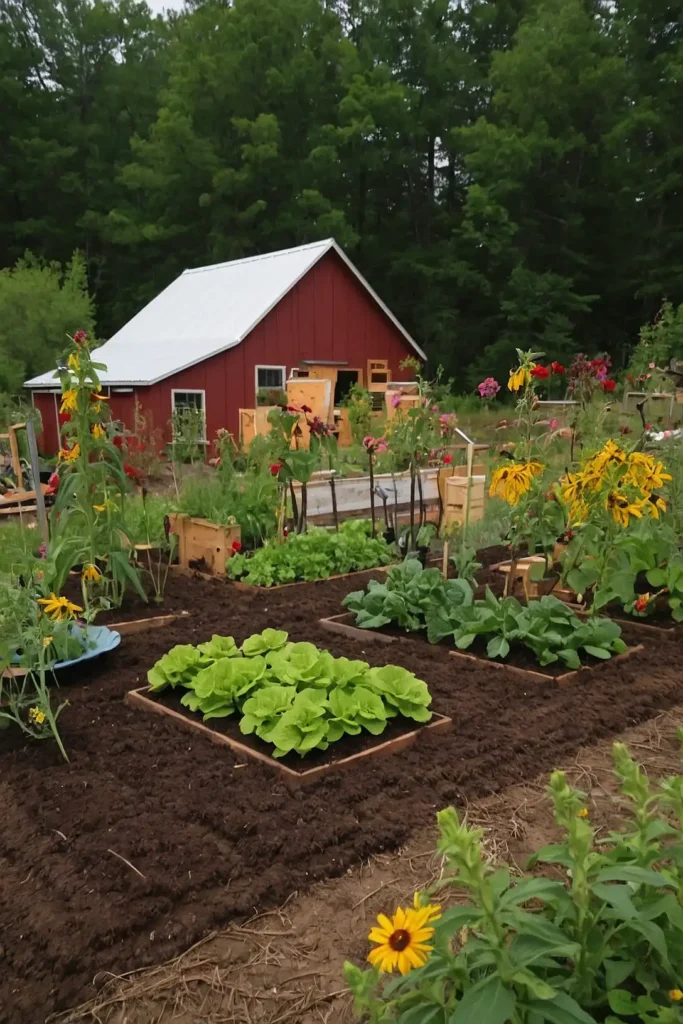
Incorporate native flowering plants throughout vegetable gardens to attract beneficial insects and improve crop pollination rates.
The ecological approach increases yields while supporting biodiversity and natural pest control systems. You’ll create thriving garden ecosystems.
Choose flowers that bloom continuously throughout growing seasons for consistent pollinator support.
14: Root Cellar Access Layout
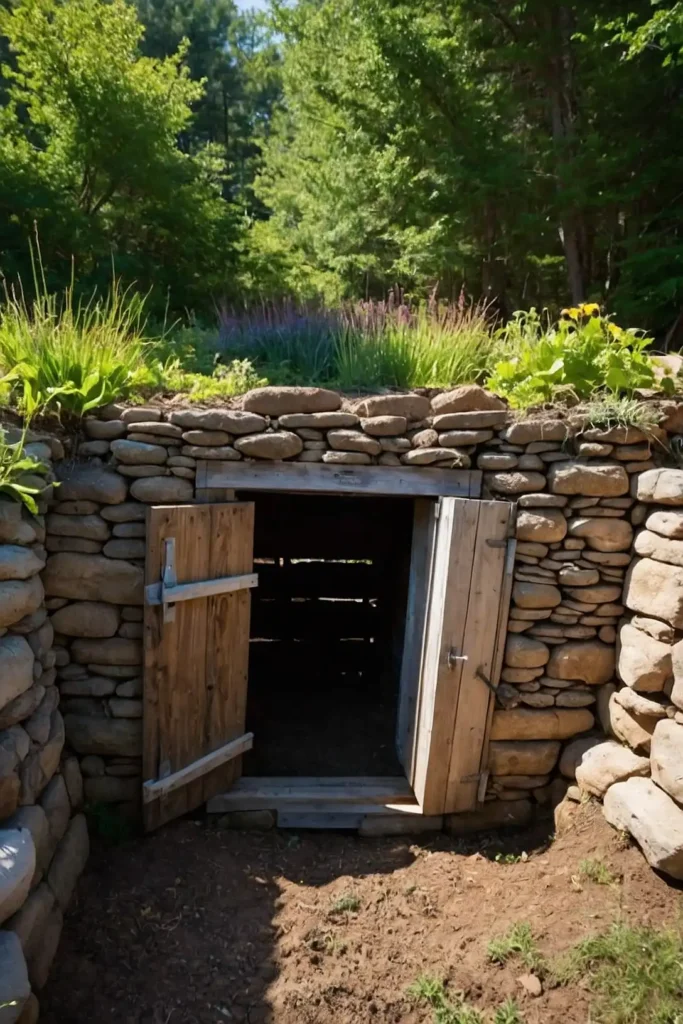
Position root vegetables and storage crops near underground storage areas for convenient harvest and preservation workflows.
The practical approach streamlines food preservation while ensuring optimal storage conditions for winter food security. You’ll extend harvest usefulness significantly.
Include washing and processing stations between gardens and storage areas for efficiency.
15: Livestock Integration Zones
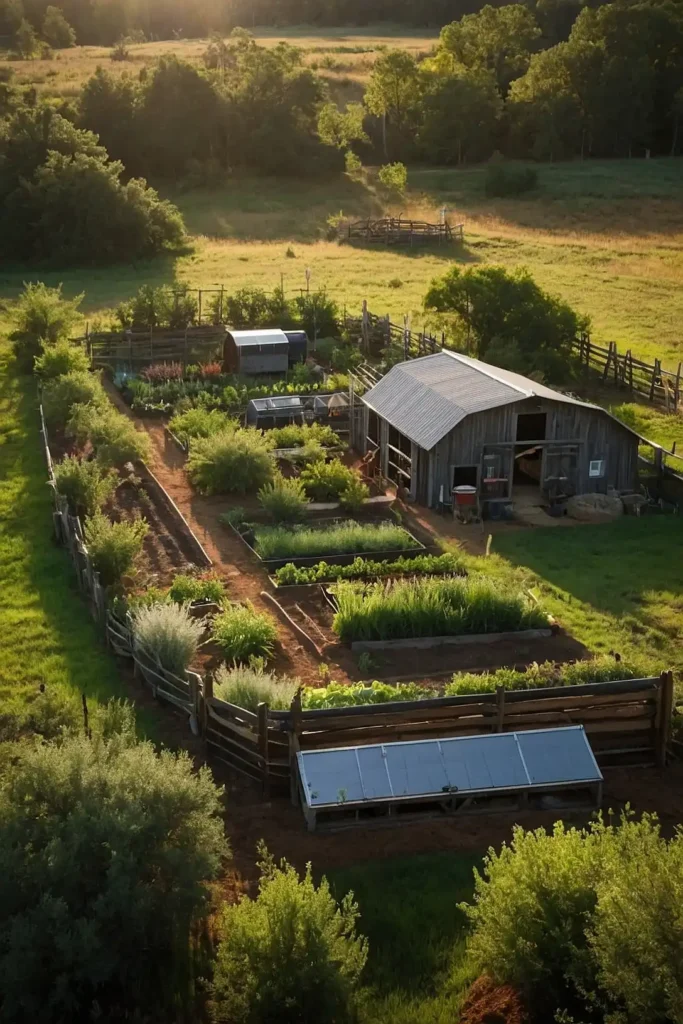
Design garden areas that incorporate chickens, goats, or other livestock for natural pest control and fertilization.
The symbiotic approach reduces external inputs while providing multiple products from the same land area. You’ll create closed-loop sustainable systems.
Use moveable fencing to rotate animals and prevent overgrazing in garden areas.
16: Medicinal Garden Sections
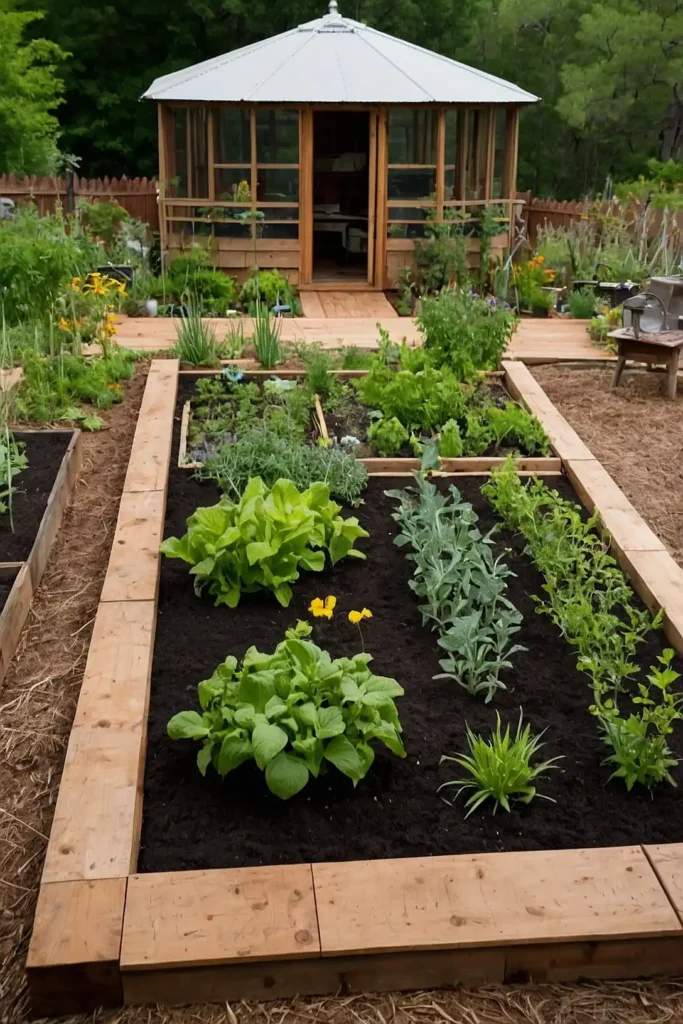
Dedicate specific areas to growing medicinal herbs and plants for natural health remedies and first aid supplies.
The wellness approach provides natural healthcare options while reducing dependence on commercial pharmaceuticals. You’ll cultivate healing right outside your door.
Research proper identification and usage before consuming any medicinal plants for safety.
17: Seed Saving Garden Areas
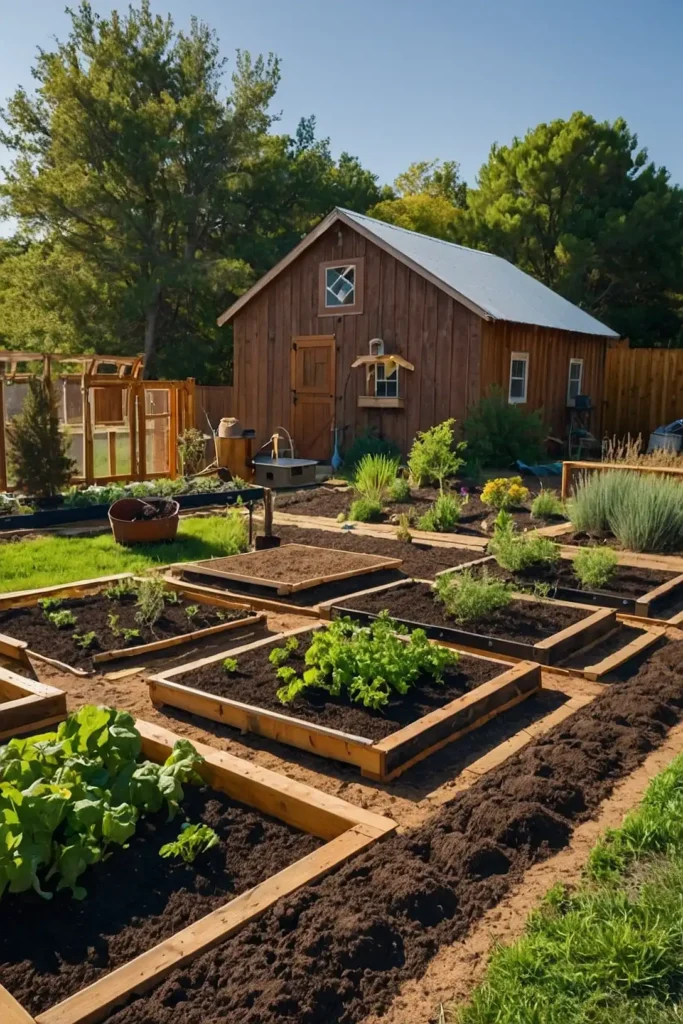
Plan garden sections specifically for producing seeds with proper isolation distances between varieties to maintain genetic purity.
The self-reliance approach ensures future planting materials while preserving heirloom varieties for coming generations.
You’ll achieve complete garden independence. Label seed crops clearly and harvest at optimal maturity for best germination rates.
18: Season Extension Tunnels
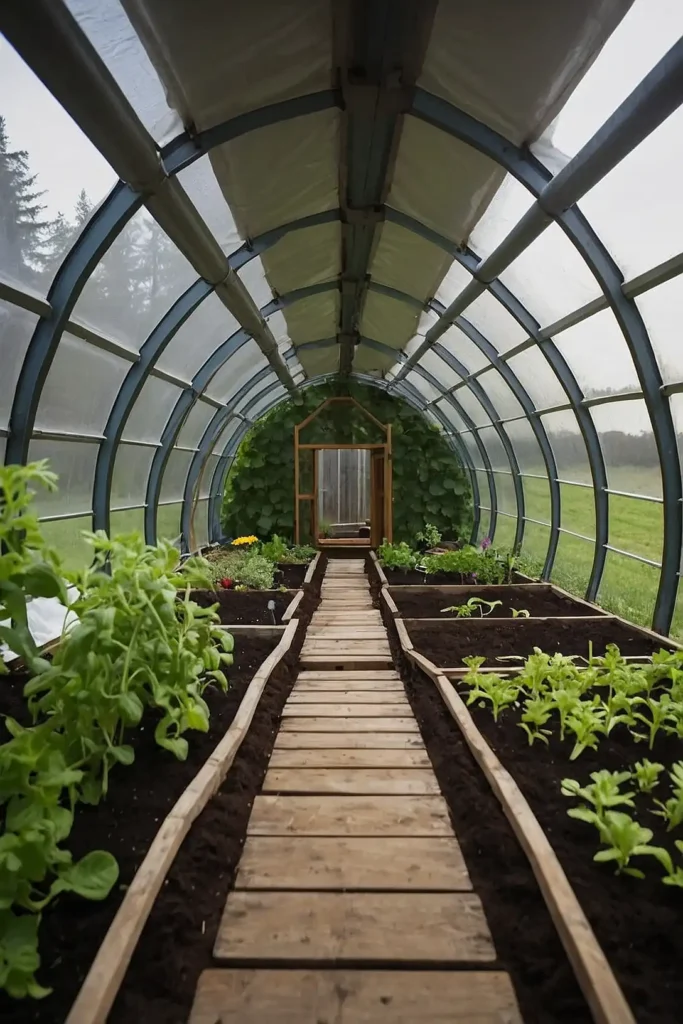
Install low tunnels and row covers throughout garden beds to extend growing seasons and protect crops from weather.
The protective approach enables earlier planting and later harvests while shielding plants from pests and harsh conditions. You’ll increase total yearly production.
Use removable covers that allow easy access for maintenance and harvesting tasks.
19: Microgreen Production Areas
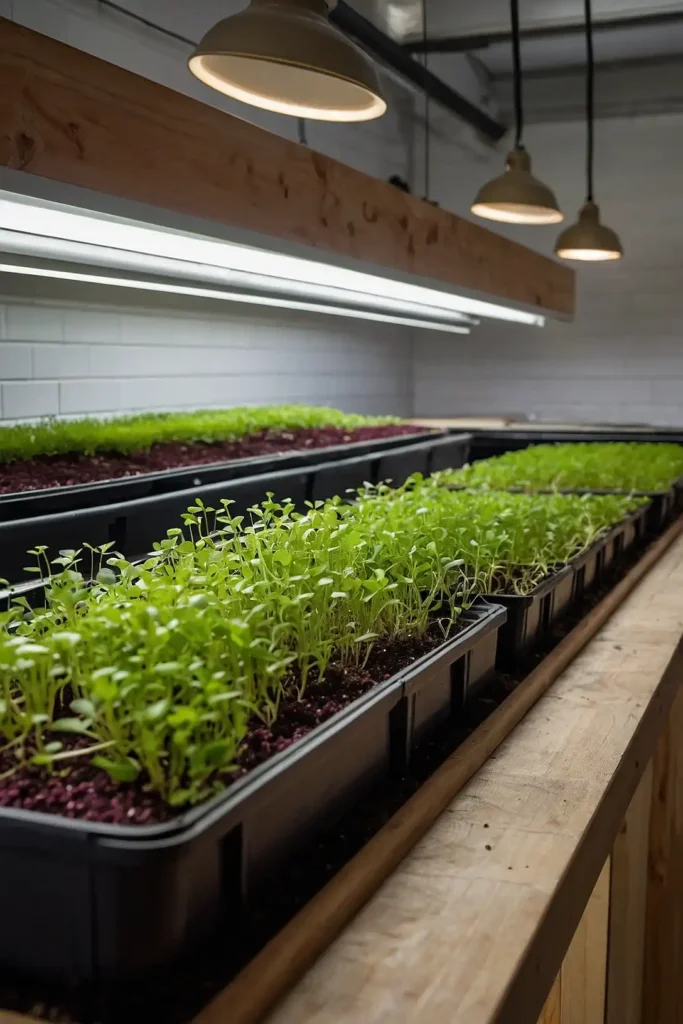
Create dedicated spaces for growing nutrient-dense microgreens year-round using shelving systems and controlled environments.
The intensive approach provides fresh greens during winter months while supplying concentrated nutrition in small spaces. You’ll enjoy fresh salads constantly.
Rotate different varieties every few weeks for diverse flavors and nutritional profiles.
20: Orchard Understory Layout
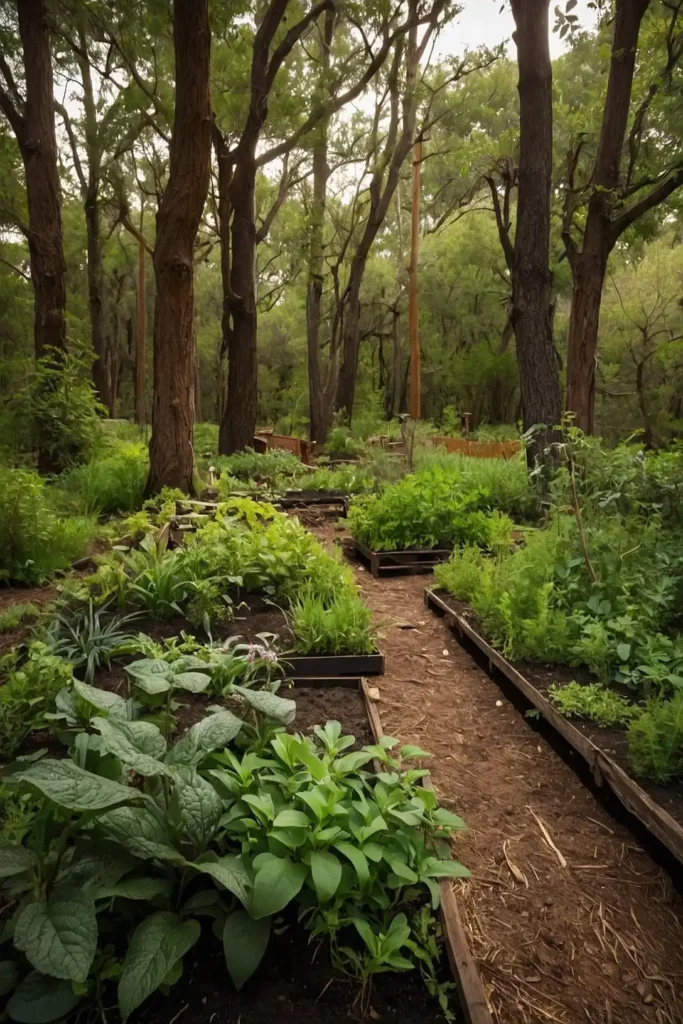
Plant compatible crops beneath fruit trees to maximize land use while providing beneficial ground coverage and additional harvests.
The layered approach creates productive food systems while protecting soil and providing diverse yields. You’ll make every square foot productive.
Choose shade-tolerant crops that complement tree root systems and water requirements.
21: Crop Rotation Planning Zones
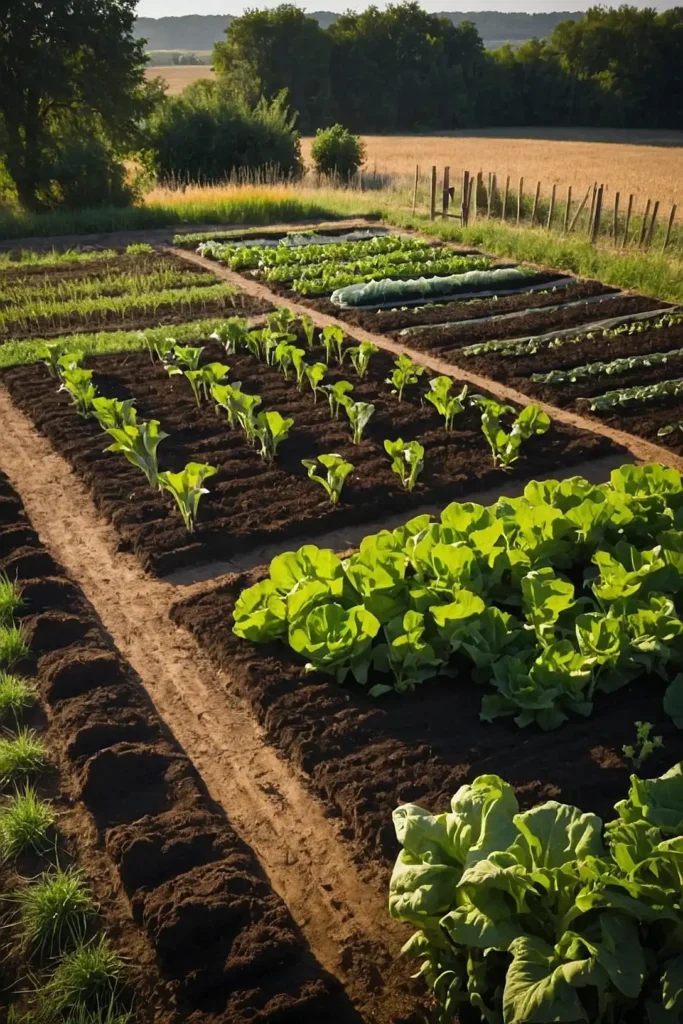
Divide gardens into four sections for systematic crop rotation that maintains soil health and prevents pest buildup.
The sustainable approach preserves soil fertility while breaking disease cycles naturally through diverse plantings. You’ll maintain productive gardens long-term.
Keep detailed records of plantings to ensure proper rotation timing and crop family separation.
22: Cold Frame Integration
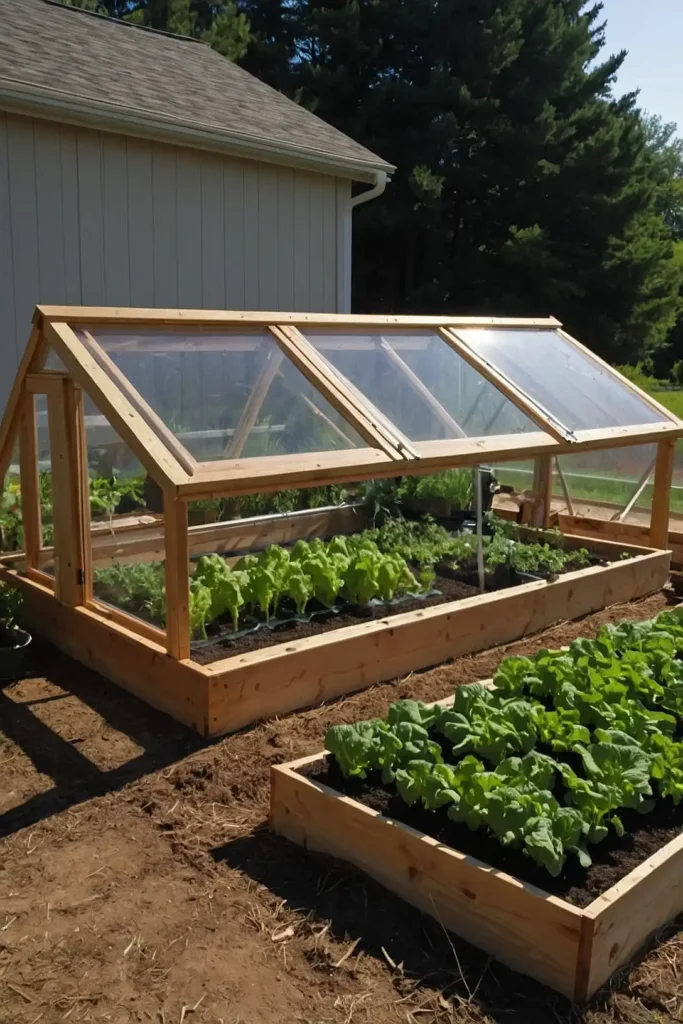
Position cold frames strategically throughout gardens for protected growing spaces during shoulder seasons and winter months.
The season-extending approach provides fresh greens year-round while protecting tender transplants during establishment periods. You’ll bridge seasonal gaps effectively.
Angle cold frames for maximum solar collection and include automatic vent openers.
23: Windbreak Establishment
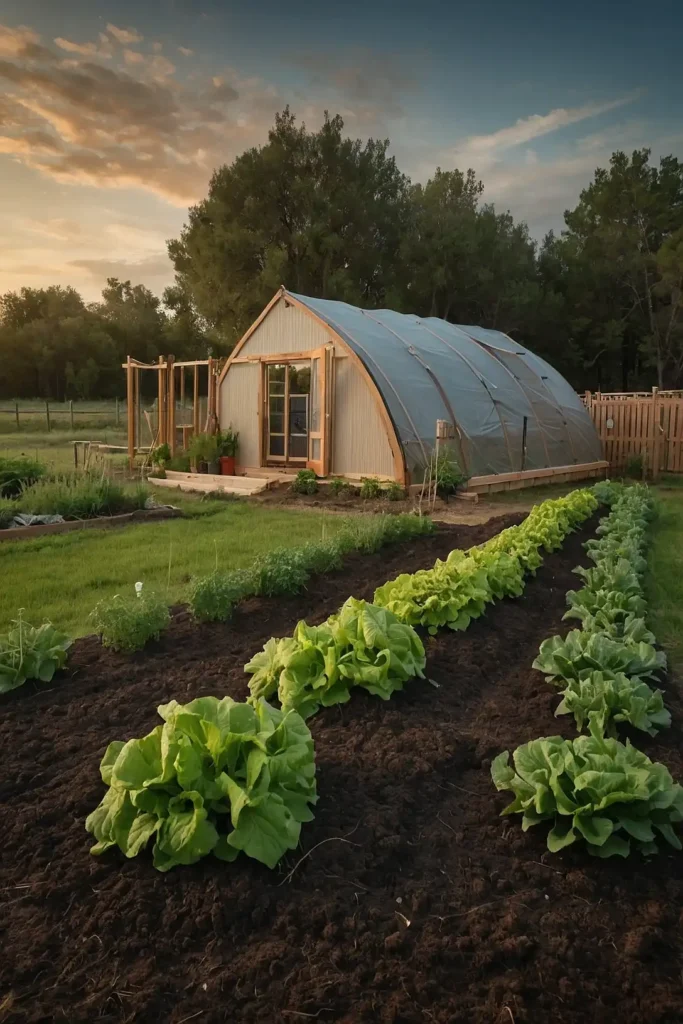
Plant trees and shrubs around garden perimeters to create protective windbreaks that shelter crops from harsh weather.
The protective approach reduces wind damage while creating beneficial microclimates for sensitive plants. You’ll improve growing conditions throughout your homestead.
Choose windbreak species that provide additional benefits like nuts, fruits, or wildlife habitat.
24: Compost System Integration
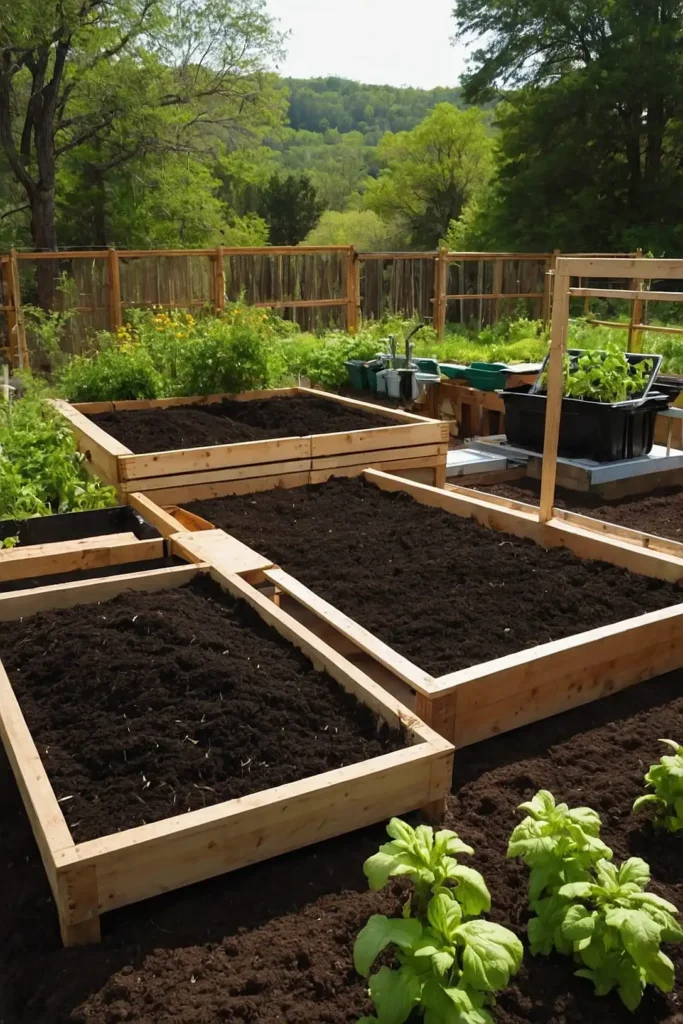
Position multiple composting areas throughout gardens for convenient organic matter recycling and soil amendment production.
The nutrient-cycling approach reduces waste while providing free fertilizer for continued garden productivity. You’ll close nutrient loops sustainably.
Include hot composting, vermicomposting, and leaf mold systems for diverse soil amendments.
25: Rain Garden Integration
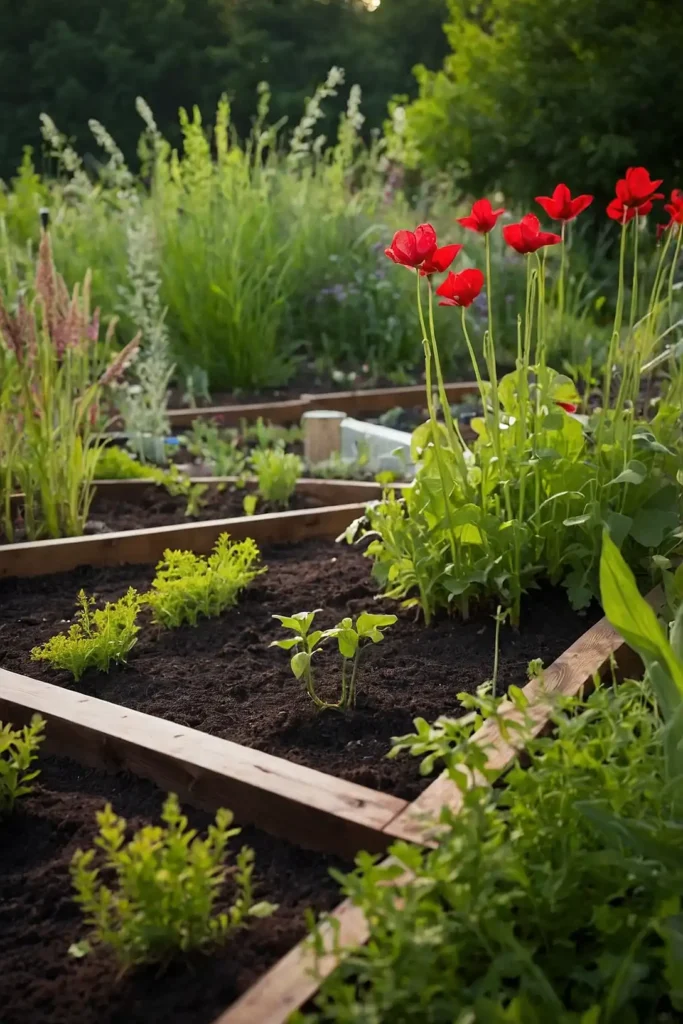
Create depression areas that capture and infiltrate stormwater while growing water-loving crops and preventing erosion.
The water-harvesting approach manages excess rainfall while providing additional growing space for wetland plants. You’ll solve drainage problems productively.
Plant native species that thrive in periodic flooding and provide wildlife benefits.
26: Tool Storage Accessibility
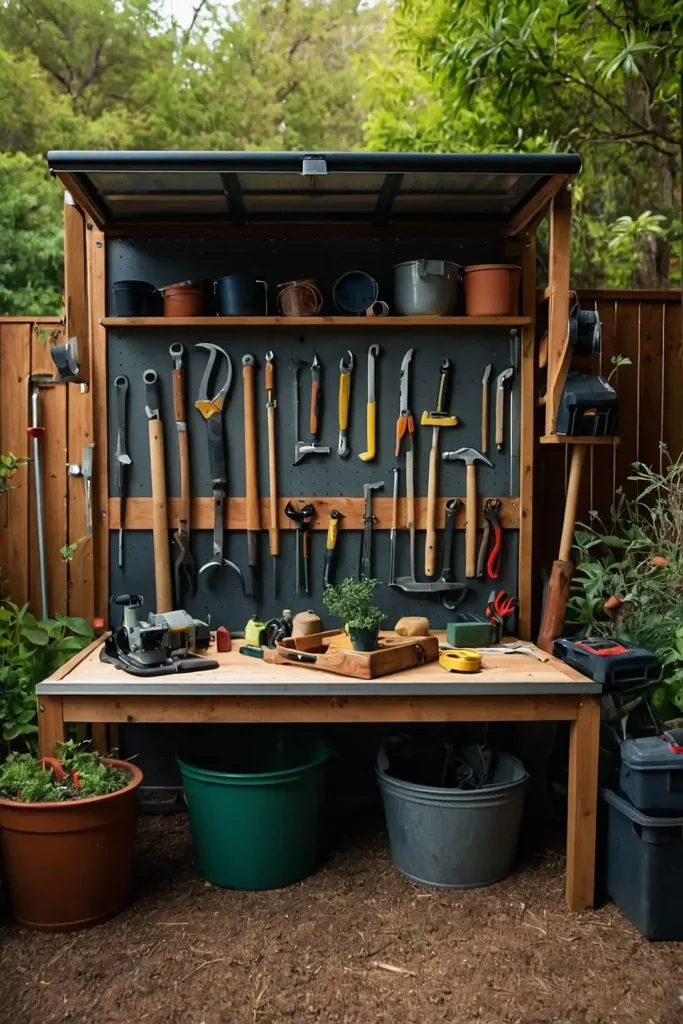
Position garden sheds and tool storage areas centrally within garden layouts for convenient access to equipment and supplies.
The efficiency approach reduces time spent retrieving tools while providing weather protection for valuable garden equipment. You’ll streamline daily maintenance tasks.
Include potting benches and seed storage within tool areas for complete garden support.
27: Market Garden Efficiency
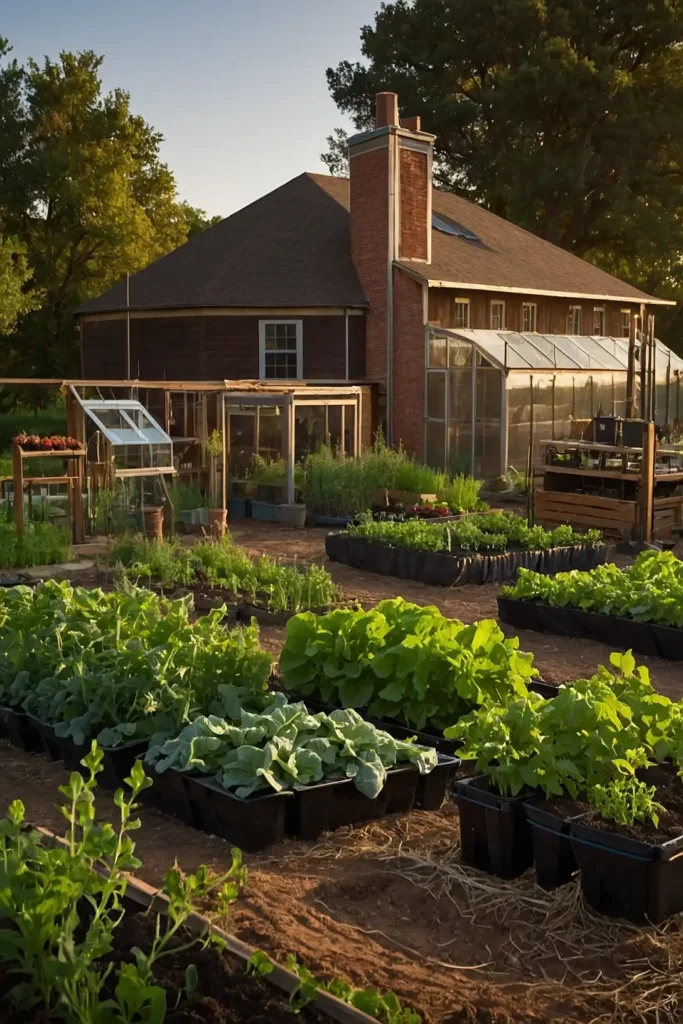
Design gardens with wide paths and uniform bed sizes for efficient cultivation, harvesting, and potential surplus sales.
The production approach maximizes yields while enabling mechanized cultivation tools and streamlined workflows. You’ll create potential income sources from excess production.
Plan harvest and washing stations for efficient post-harvest handling and market preparation.
Conclusion
Create productive homestead gardens that provide food security, sustainability, and self-reliance through thoughtful layout planning and design principles.

